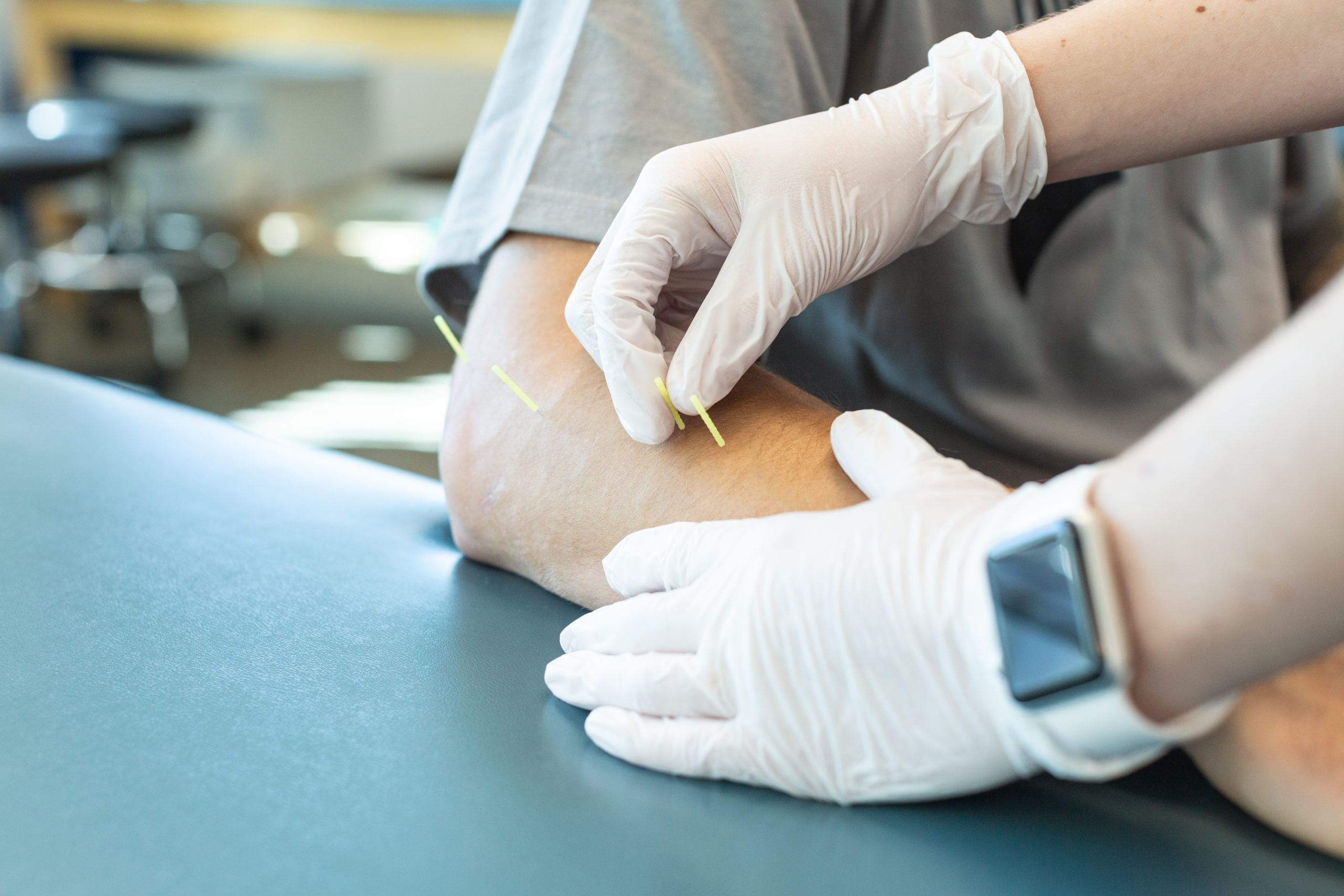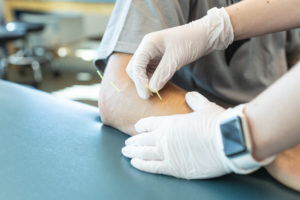Using Dry Needling for Pain
By Genevieve Afan, PT, DPT
AzOPT Buckeye Doctor of Physical Therapy
What is Dry Needling?
Dry needling is a technique used by physical therapists who successfully complete a certification process. It is a treatment rooted in Western medicine, unlike acupuncture, which is rooted in Eastern medicine. Dry needling uses acupuncture needles with a different approach (no “chi” or energy effects intended). Rather than placing a needle in the foot to relieve headaches (for example), we place the needle right in the muscles/tissues where you are having pain or dysfunction.
How can dry needling help with my pain?
Dry needling is intended to help the body “reset” the natural healing process when there is an injury. Sometimes, the body gets stuck in the process of healing and never fully completes it, often contributing to chronic pain. By inserting a needle into the connective tissues and muscle tissues, dry needling seeks to create a “micro-damage” (not permanent or harmful) to the tissues that sends a signal to the brain calling for help. The brain will then respond to this call for help by kickstarting the healing process and sending healing cells to the area to repair the damage. The hope then is that the body can fully complete the healing process in the affected area and therefore decrease pain.
How long does it take for dry needling to work?
Some patients feel the benefits of dry needling immediately or as soon as the same day following treatment. Others may not feel any difference until they have had 2-3 treatments. Many patients require more than 1 treatment with dry needling before they are able to determine if it is making a difference in their pain. There are some patients who have significant pain relief in 1 or 2 treatments and only need to return for dry needling periodically to manage their pain. Others however, may take more time and need more frequent treatment sessions. Bottom line: everybody heals differently and responds to different types of treatment.
How do I know if dry needling is right for me?
If you have pain, especially pain that won’t seem to go away, dry needling may be the catalyst you need to help your body heal. Some patients hear about dry needling from friends, family, or through research and desire to give it a try right away. For others, this may be something they wait to try until they have exhausted all other relatively non-invasive treatment options. The #1 reason against dry needling is a fear of needles. Otherwise, the risks associated are relatively low.
Does dry needling hurt?
For most people, it does not hurt any more than the pain they are already experiencing. You will typically feel the initial “prick” of the needle as it breaks through the outer skin layer and may feel a temporary “zing” lasting for no more than 15 seconds. If the needle is an area with significant muscle tightness, you may feel a dull ache while the needle is in. If your therapist does a winding technique with the needles, you will also likely feel discomfort (strong achiness) during the winding process, but again, this is relatively temporary. Some patients feel sore following dry needling sessions, much like the kind of soreness you have after an intense workout (fatigue, achy, tender).
How long does a typical dry needling treatment session last?
This depends on the technique used by your therapist. In most of our clinics there are 3 common techniques (from most gentle to more aggressive):
-
- Winding: the needles are inserted and left in place for 10-20 minutes. At periodic intervals, the therapist will gently wind the needles and then remove them all after the set time frame.
- Electro-dry needling: the needles will be attached to an electrical stimulation unit (similar to a TENS unit, but for needles) that will cause the needles to “thump”/tap/vibrate gently during the treatment. This is typically left in place for 10-20 minutes and then removed.
- Pistoning/fanning: the needle is inserted into a tight muscle and moved repeatedly up and down or around the muscle tissue, often causing it to twitch strongly. This process can take as little as seconds to a few minutes. The needle is not left in place.
Keep in mind that dry needling has been found to be most effective when combined with other therapeutic interventions (for example, therapeutic exercise). Used alone, the benefits are not as great. Simply put, this is one of many treatment options physical therapists can utilize to help you on your journey to Living Better! 🙂
Be sure to talk to your physical therapist regarding any further questions or concerns you have regarding use of dry needling to treat your pain. Request an appointment here!








